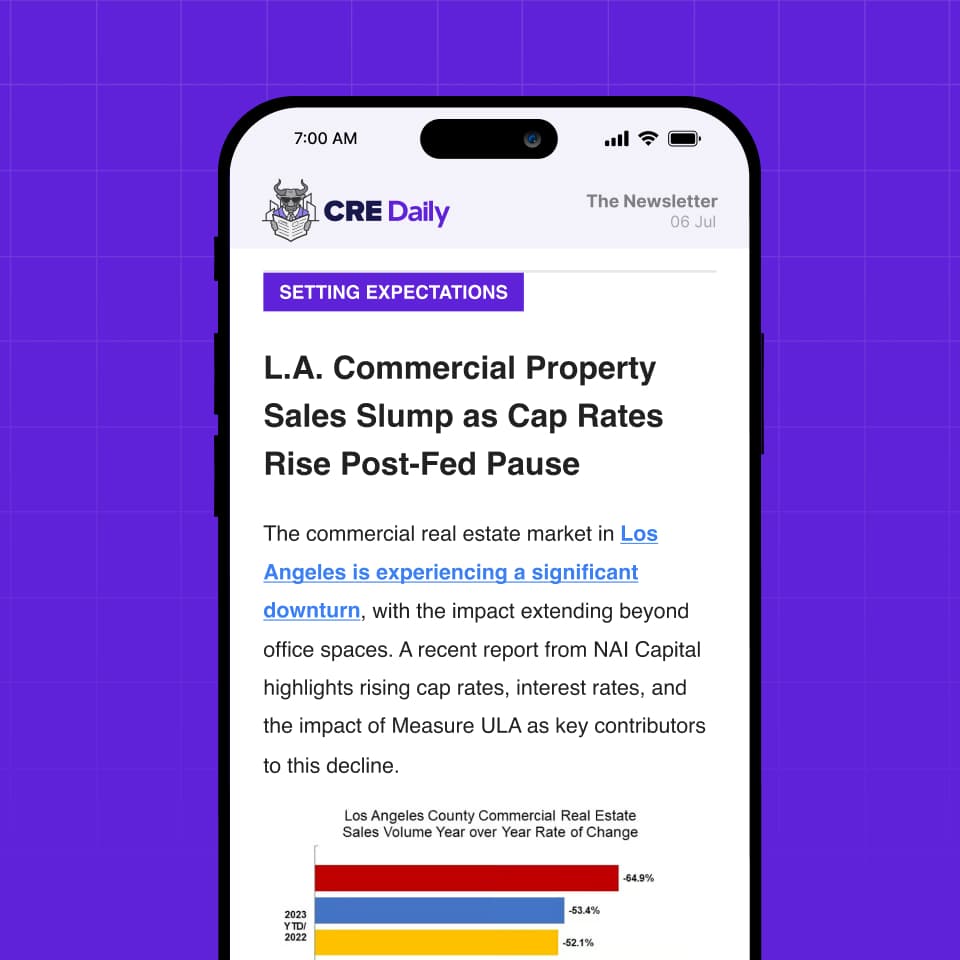- Credit spreads across all major CRE property types have widened between late March and early April 2025, with multifamily, industrial, retail, and office sectors each showing increases of around 8 to 12 basis points.
- Analysts from Trepp draw comparisons to the pandemic-era spread surge, citing growing economic uncertainty and geopolitical tensions as similar underlying drivers.
- Lenders are reacting to tariffs and inflationary pressures by tightening credit, signaling the beginning of a possible repricing cycle in the CRE lending market.
The Tariff Effect: CRE Lending Under Pressure
According to GlobeSt, widening credit spreads are now the latest casualty of mounting trade tensions. As countries levy retaliatory tariffs and inflation creeps back into focus, the commercial real estate lending environment is showing signs of stress.
Trepp analysts Jamie Quach and Valerie Mondschein point to a familiar pattern: during times of significant uncertainty—such as the COVID-19 crisis in 2020—CRE credit spreads have surged. The current environment, marked by ongoing tariff battles and global volatility, appears to be triggering a similar market reaction.
Then vs. Now: A Familiar Surge
During the pandemic, spreads jumped quickly—retail and multifamily properties saw a 40-basis-point average weekly increase in late Q1 2020. Office and retail spreads peaked at over 330 basis points by late March and early April of that year.
Fast forward to spring 2025, and spreads are on the move again, albeit at a more moderate pace. Between March 21 and April 11, Trepp data shows:
- Multifamily: 150.2 → 159.3 bps
- Industrial: 152.8 → 161.9 bps
- Retail: 165.4 → 177.0 bps
- Office: 203.8 → 213.8 bps
These increases reflect growing caution among lenders, who are adjusting pricing in response to trade-related inflation concerns and risk repricing.
Get Smarter about what matters in CRE
Stay ahead of trends in commercial real estate with CRE Daily – the free newsletter delivering everything you need to start your day in just 5-minutes
What’s Driving the Shift?
Lenders’ sensitivity to macroeconomic signals is not new, but the causes are evolving. Companies like Target and Shein report being forced to pass tariff-related cost increases onto consumers. Meanwhile, escalating rhetoric from European trade officials threatens further retaliatory measures, adding to global instability.
The potential for further import price increases could drive inflation upward, possibly forcing the Fed to reconsider its current interest rate stance.
Why It Matters
For developers and investors, widening spreads mean higher borrowing costs at a time when capital access is already constrained. The current spread movement may be modest compared to 2020 levels, but it could signal a more significant trend if trade tensions continue to escalate.
What’s Next
Should trade negotiations stabilize, the pressure on spreads may ease. But without resolution, lenders are likely to continue repricing risk, making it more expensive to finance new and existing CRE projects. Market participants should prepare for continued volatility in both lending and construction costs as the global trade landscape evolves.















